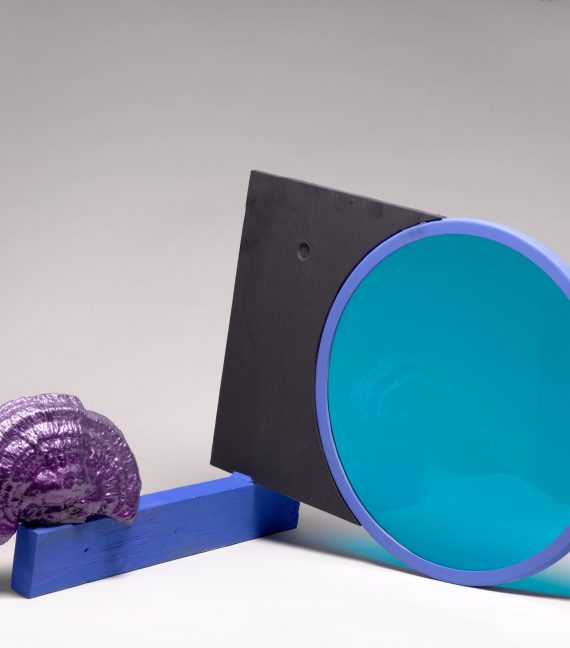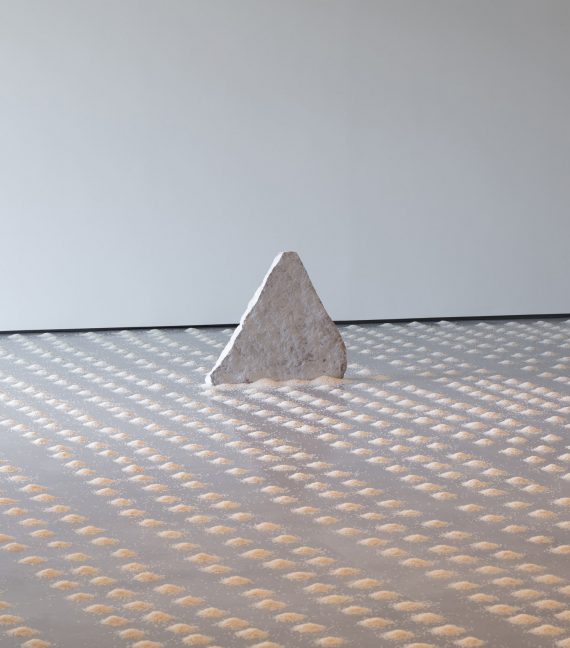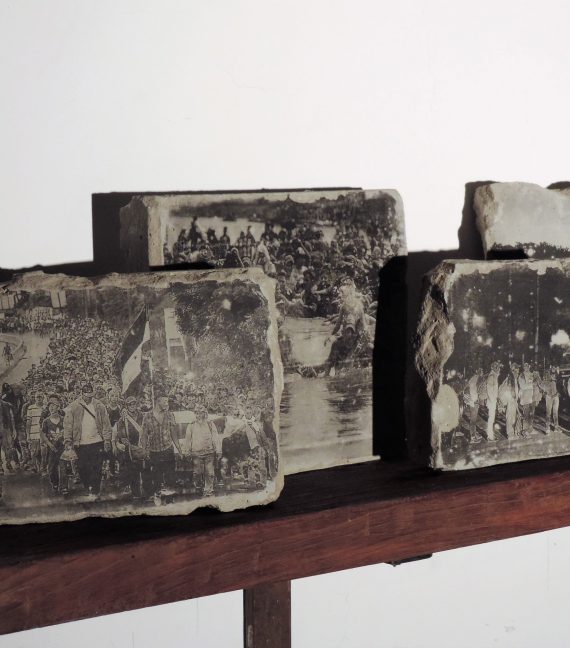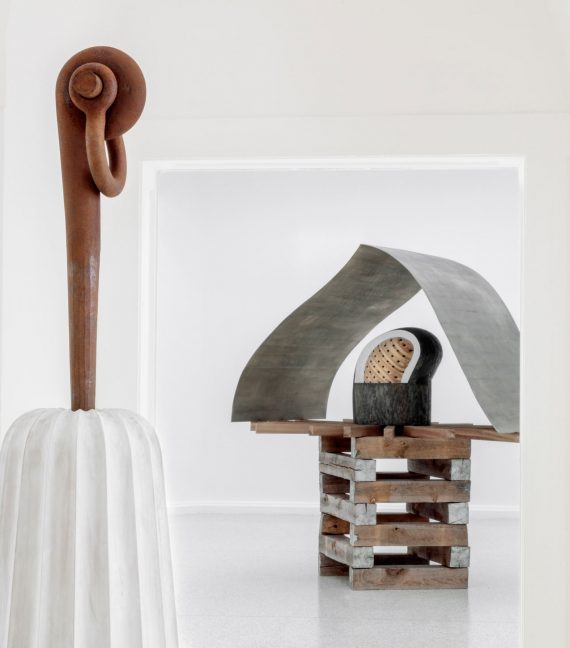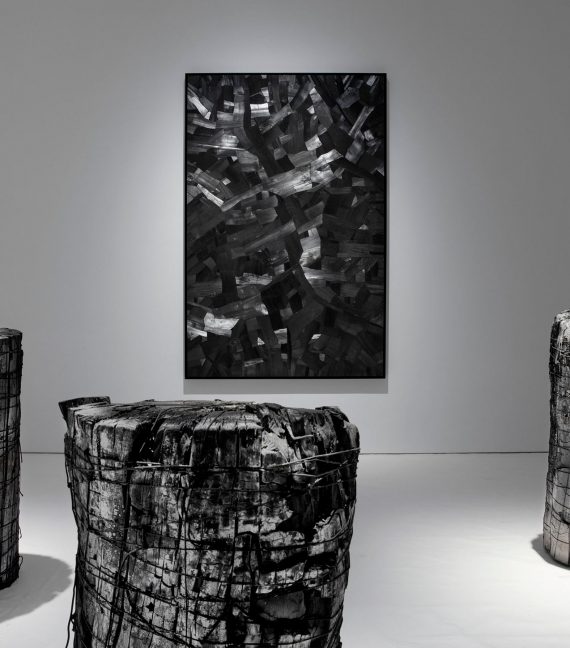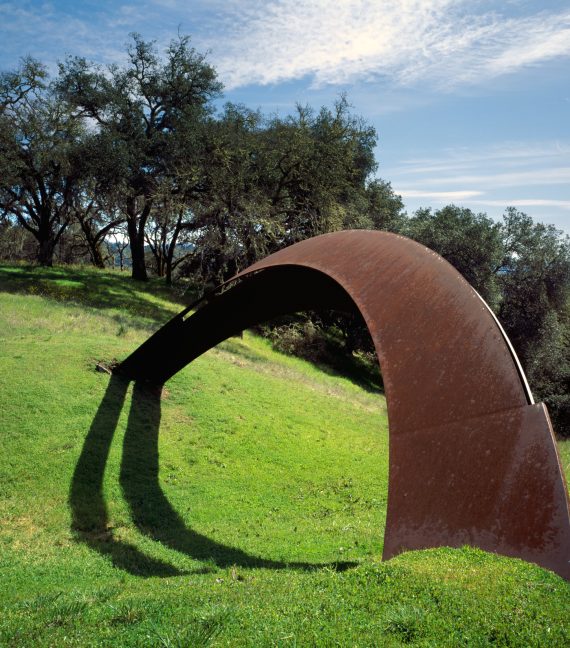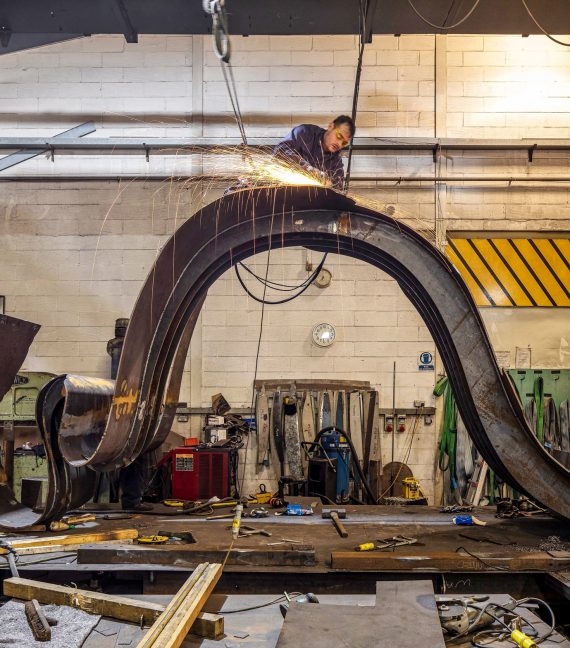NEW YORK Mitchell-Innes & Nash
While Braman is known for large-scale works, her smaller sculptures command equal recognition. Related to Minimalist traditions, these works use deceptively simple components to create a consortium of forms and effects, often highly colorful.
Yorkshire Sculpture International: Jimmie Durham, Tau Lewis, Wolfgang Laib, and Nairy Baghramian
WAKEFIELD, U.K. The Hepworth Wakefield
By lucky happenstance two of Britain’s foremost 20th-century sculptors, Barbara Hepworth and Henry Moore, were born a mere six miles from each other, in West Yorkshire’s Castleford and Wakefield, and only five years apart, in 1898 and 1903 respectively.
Inmortalizar la Memoria: Una Conversación con Ezequiel Verona
El trabajo de Verona combina una fuerte presencia material con una búsqueda sistemática por dar a la imagen el rol patagónico de ser, simultáneamente, registro y preservación de la memoria.
Martin Puryear
VENICE U.S. Pavilion, 58th Venice Biennale
“Liberty/Libertà,” Martin Puryear’s U.S. pavilion exhibition, uses subtle, disarming, and purposeful juxtapositions to create a mindful meditation on what it means to be an American artist and citizen today.
Rona Pondick: Civilizing the Self
When asked about her influences, Rona Pondick tends to reply succinctly. “Kafka and my mother,” she will often state, but when pressed further she has only been known to elaborate on the former. In looking at the hybrid metal creatures for which Pondick is perhaps best known, Kafka’s influence—from Metamorphosis to his letters to his
Kader Attia
BERKELEY Berkeley Art Museum and Pacific Film Archives
Attia, a French Algerian artist currently living in Berlin and Algiers, has been working with the concept of repair from the trauma of war for more than a decade. He is particularly interested in the process of healing—for individuals and for societies—and in repairing the damage caused by conflict and by colonization.
A Conversation with Lee Bae
Lee Bae is a significant figure in the trajectory of Korean Modernism. Born in Korea, Bae studied under Park Seo-Bo, one of the founders of Dansaekhwa, an art movement born in South Korea in the 1970s.
Oliver Ranch: A Relationship to Land
Oliver Ranch is one of the few American sculpture parks in which the works have all been conceived explicitly on and for the site—relationship to land being the one imposed constraint. The Olivers’ approach to commissions involves working intensively with artists and asking them to commit to a multi-season study of the land as part of the process.
Nari Ward
NEW YORK New Museum
Amazing Grace (1993), an installation of fire hoses and nearly 300 abandoned baby strollers first shown at a firehouse in Harlem, originally referred to the crack epidemic, AIDS, and homelessness sweeping through that neighborhood. Now, as one walks through the strollers along a pathway formed from the hoses while listening to Mahalia Jackson sing the gospel song of the title, it is hard not to think of family separations and the ongoing humanitarian crisis at the border.
Nick Hornby in Harlow, U.K.
Nick Hornby’s largest sculpture to date is unveiled this month in Harlow, U.K. The town’s historical collection includes works by Auguste Rodin, Barbara Hepworth, Henry Moore, and Elizabeth Frink, among many others, so is a fitting environment for an artist whose subject is frequently the canon and its construction.



